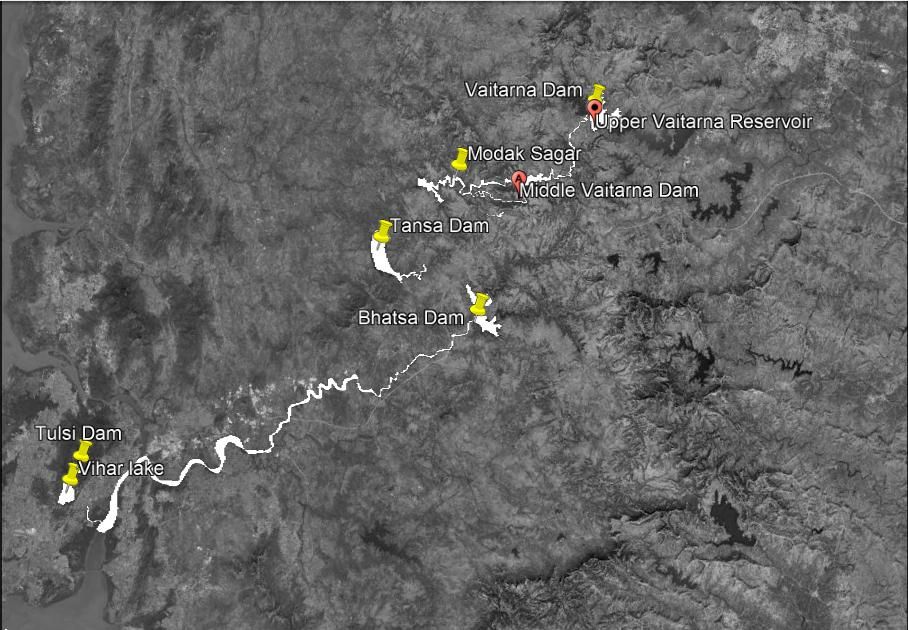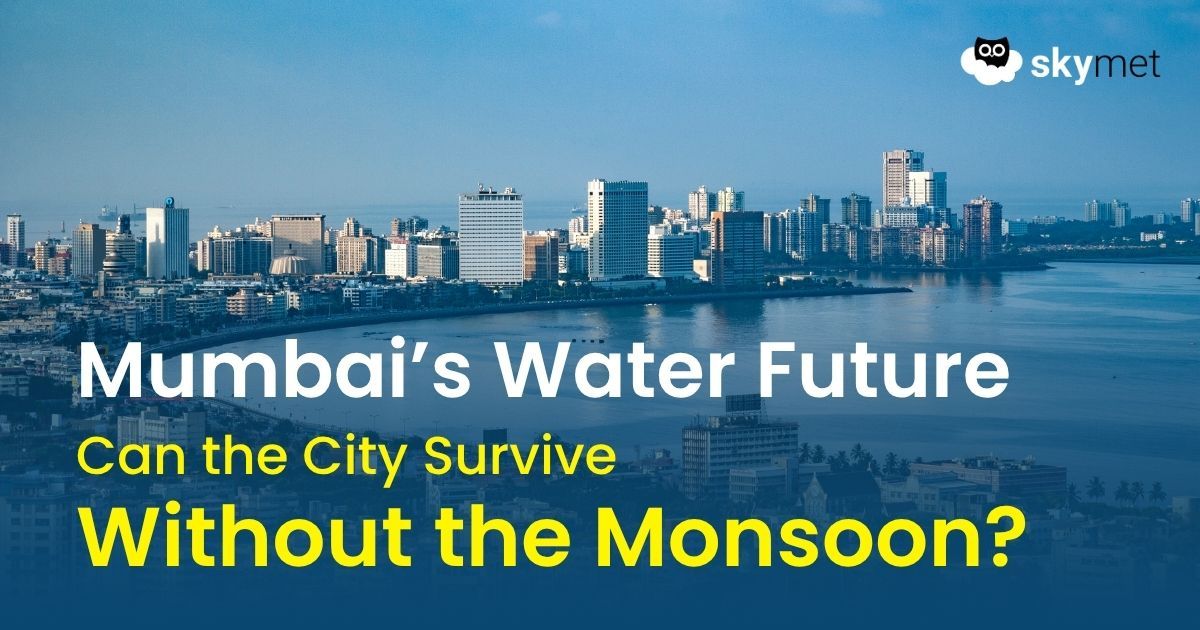Mumbai—India’s financial powerhouse and an island city—stands at a critical juncture. With a burgeoning population and escalating urban demands, its water security hinges on a delicate balance between monsoon-fed reservoirs and strained groundwater systems. While the rains remain the lifeline, climate variability and rapid urbanisation are testing the resilience of Mumbai’s water infrastructure.
The Central Role of Reservoirs
The lifeblood of Mumbai’s water supply is sourced from seven key reservoirs— Bhatsa, Upper Vaitarna, Middle Vaitarna, Modak Sagar, Tansa, Vihar, and Tulsi —located in the Thane and Nashik regions.

These lakes collectively channel water into treatment plants, such as the monumental Bhandup facility, which is among Asia’s largest.
Pre-monsoon, the city’s reservoir storage often plummets to worrying lows. Studies routinely report capacities slipping below 20% by May, sometimes approaching critically low levels. The onset of the monsoon in July is therefore pivotal; it not only replenishes storage but underpins Mumbai’s ability to avert water rationing.
Groundwater: A Silent Reservoir
Beneath the city lies another asset: groundwater aquifers. Historically tapped through borewells, they have softened Mumbai’s water constraints during lean periods. Yet, extraction is uneven and largely unregulated, pushing some zones into over-extraction and localized depletion.
Urban expansion—marked by concrete surfaces and reduced green cover—has disrupted natural recharge. Heavy rains now largely run off into drains rather than percolating down to refill aquifers. Though city authorities have advanced rainwater-harvesting norms and initiated recharge borewells in key zones like the Mithi River basin, implementation remains uneven.
Monsoon Recharge: Science in Action
The symbiotic relationship between monsoon rainfall and reservoir recharge cannot be overstated. Rainfall is not merely seasonal—it is structural. A successful July monsoon often restores reservoir levels above the 60–70% mark, safeguarding supply during the dry season. Conversely, delayed or erratic monsoons heighten the risk of early water cuts.
Rainwater harvesting emerges as a compelling complement. While urban regulations now mandate rooftop collection in new or large buildings, older quarters lack infrastructure or incentives to retrofit. Capturing even a fraction of rooftop rainwater could meaningfully offset both stormwater drainage burdens and groundwater depletion.
Building Resilient Water Systems
To strengthen Mumbai’s water resilience, a coordinated, science-driven strategy is essential:
Enhance reservoir management: Modernise monitoring, reduce losses, and integrate dynamic forecasting to minimise wastage.
Scale aquifer recharge initiatives: Install recharge borewells, improve soil permeability in open spaces, and create overflows that rejuvenate underground reserves.
Sustain rainwater harvesting: Expand funding, boost community awareness, and incentivise retrofitting of existing structures with harvesting systems.
Adopt smart water regulations: Link water tariffs to usage patterns, promote leak detection, and reduce non-revenue water.
Engage the community: Foster public participation in water management through educational campaigns and neighbourhood recharge drives.
Mumbai’s domestic water security is no longer a static infrastructure challenge; it’s a dynamic interplay between nature, science, and urban aspiration. While reservoirs and monsoon rains remain central, groundwater and decentralised rain harvesting are no longer optional; they are indispensable. With smart policies, scientific interventions, and citizen-led action, Mumbai can transcend its water challenges and build a future where resilience is not just hoped for, but assured.













